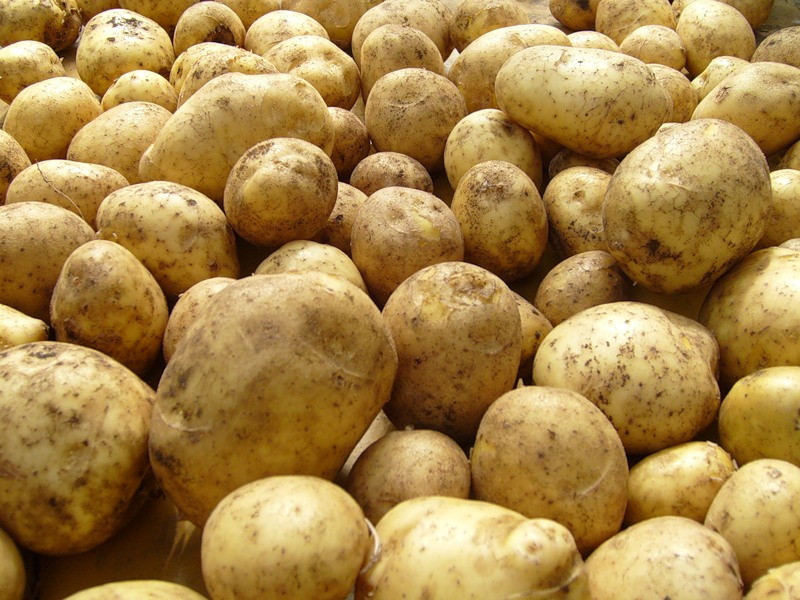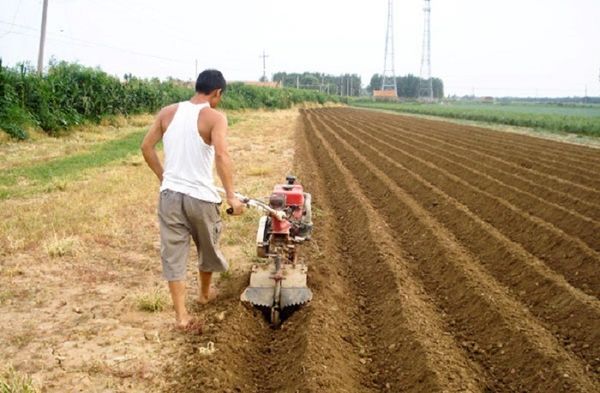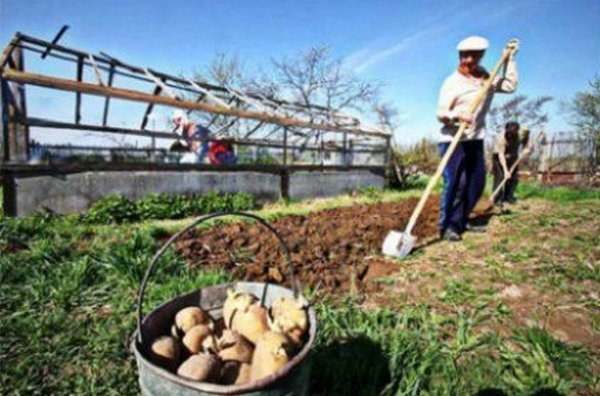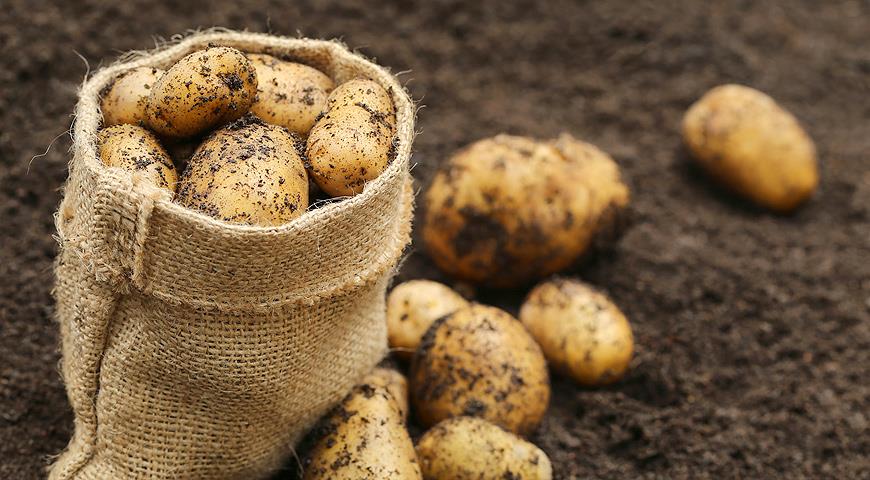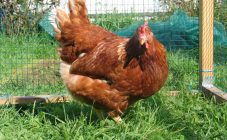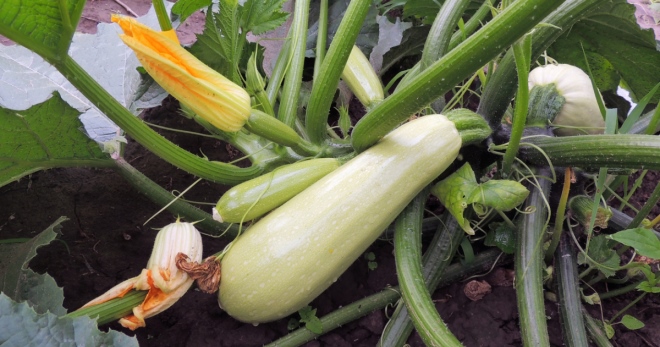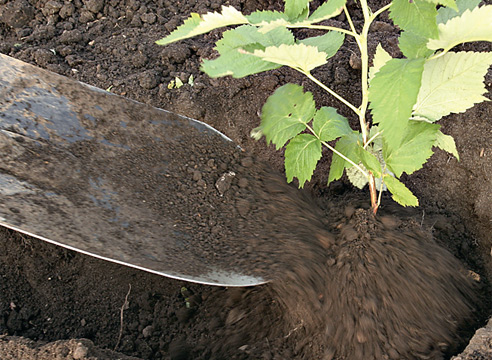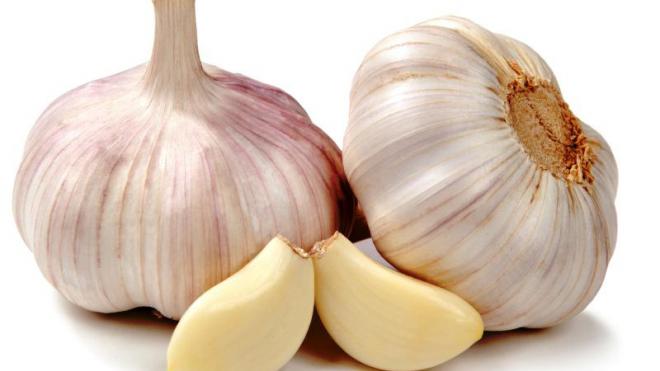Content:
It is difficult to imagine a daily diet without a popular vegetable, which is commonly called “second bread”. As a component of many recipes, potatoes are nutritious and tasteful.
general characteristics
The growing season of potatoes lasts for one season (from early spring to late autumn). It goes through several phases of vegetation: shoots, growth, bud formation, flowering and ripening. After flowering, round green fruits with seeds are formed. Make sure that the children do not try to determine what their taste is. They are poisonous because they contain solanine.
In place of the planted tubers (the size of an egg), bushes of several shoots (from 2 to 4) appear. They reach a height of 30-50 centimeters. The color of the potatoes, the shade of the leaves, the height of the bushes depend on the varietal characteristics. Fruitful shoots (stolons) are formed under the bush. They form miniature nodules in the amount of 5 to 16 pieces.
The collected tubers are sorted, selected for planting and for use as food. Large and standard potatoes are used for planting. In the presence of a small number of tubers, large tubers can be cut, leaving at least 2-3 buds (eyes). "Substandard" is used for animal feed.
Depth selection
In order for all the potatoes to be large, you need to follow the rules for planting and growing crops. It is important to adhere to the planting scheme, follow the care recommendations. Before starting planting tubers, you should figure out how deep to plant potatoes.
Soil dependence
If the soil in the garden is heavy (clay or loam), the potatoes should be deepened by 6 cm.On sandy loam or sandy soils, the optimal distance ranges from 6 to 10 cm.On fertile (lowland and peat) soil, planting is carried out 10-12 cm deep.
How tuber size affects
Taking into account the size of the seed, the planting depth of small potatoes is within 4-5 cm, medium size - 6-7 cm, large - 8 or 9 cm.
With all of the above methods, large tubers are applied deeper than others.
Groundwater and planting
The close-lying groundwater at the site also affects the choice of deepening: in such places, preference is given to smaller tubers. If sprouts have already appeared on them, then even a three-centimeter hole will be enough. Some vegetable growers recommend planting shallowly, then hilling. But this option is not very convenient, it creates difficulties in harrowing. And the hatched weed shoots are destroyed only partially.
Why not deepen
It is not worth planting more deeply. The mucky root system will not penetrate deep into the ground. In addition, the deepening blocks access to food.
Distance between bushes in a row
Along with the depth, sufficient indents for the growth of bushes are important. To determine the distance between the holes, you need to take into account the space that the overgrown root system will need.It should be located freely, without interfering with the neighboring ones. The distances are also regulated by the weight of the potatoes for planting.
The question often arises, at what distance to plant large and small potatoes. The larger it is, the less often it is in the row. How many centimeters should there be indents? Depending on the mass, they should equal:
- 20 cm for tubers up to 50 g;
- from 20 to 28 cm if the potato weighs 50-100 g;
- 28-40 cm for 100-gram fruits.
You also need to take into account the fact that the "luxury" of the root depends, among other things, on the number of eyes. The more there are, the more voluminous the roots will be.
Row spacing
The principle is the same: the distance must be respected so that there is enough space for the normal development of the bushes. The row spacing is at least 60-70 cm. The ripening period of varieties also dictates the size of the indents:
- for early maturing, it is 70-80 cm.
- for mid-late - 80-100 cm.
It is especially important to monitor the location of the rows on the ridges, since the lack of space between them complicates the hilling process.
The method of arrangement, in which the rows are doubled, is gaining popularity. This scheme involves placing the rows "end-to-end", 20 cm from each other. The spacing between double-row lines is increased to 1 meter.
You can place the bushes in a checkerboard pattern. The advantages of this method include improved illumination and sufficient access to the bushes during processing. The distance between double and staggered potato beds should be 70 to 110 cm.
To achieve this, you can use a tension marker cord when landing. A flat board is also suitable, which is moved, maintaining the required distance. Better yet, use special devices or markers that you can make yourself. These can be scribes for forming rows and row spacings of equal width, as well as plows. Their task is to facilitate manual labor, work with their help progresses faster.
Depth for different planting patterns
Taking into account the methods of landing, the depth also varies:
- On a plot with a flat surface, it is 6-8 centimeters. Provided that the soil is light, it can be planted 10 or 12 cm from the ground level.
- On the ridge, deepening is carried out by 8-10 cm.
- In the furrow, the potatoes are placed 6-8 cm deep if it is laid by a plow (hiller). If a hoe or hoe was used, then the vegetable is planted smaller, only 4-5 cm.
- In trenches filled with peat, humus, sawdust or compost, it is lowered to a depth of 5-10 to 30 cm. This method is most often used in the Chernozem region.
The specified depth parameters should not be ignored, this will affect the yield.
"Smart" beds
Some growers are introducing the latest technology - "smart" beds. Fertile soil is placed in wooden containers or brick structures 1 m wide, alternating with layers of humus and compost.
A smart ridge, despite the complexity, has a number of advantages. The useful substances are better stored in the container - the soil can be renewed annually.
Planting potatoes under a shovel
Now we are talking about the most common method used in dachas and vegetable gardens. The rules for such planting also need to be considered. Although many gardeners know how to plant potatoes under a shovel. With the use of the tool, the vegetable is planted mainly on personal plots. The advantages of the method are speed and simplicity.
Before planting prepared potato tubers under a shovel, you should prepare the soil.To do this, it is best to apply organic fertilizers in the fall: humus, semi-rotted manure, compost, you can also add ash by deep plowing. In the spring, the land can be plowed with a walk-behind tractor. Then you can start planting tubers.
Here it is necessary to clarify how to properly plant the potato beds under a shovel, it is better to choose. It can be planted in three ways: on a flat solid plot, on ridges and on ridges. The following scheme for planting potatoes is typical: the distance in the row between the holes is about 30 cm (for large potatoes), the smaller tubers are planted at a distance of 20 cm.The row spacing is 70 cm.
Can be planted even without a shovel. The tubers are simply laid on the surface of the soil without digging it up. They are covered not with earth, as usual, but with straw. With this method, the fruits are large and clean, the straw does not allow weeds to grow. Later, it decays and turns into fertilizer.
All methods and methods involve adherence to the rules of agricultural technology, including measures such as weeding and hilling. They give strength to the plant, strengthen the immune system, protecting against diseases. Ignoring them, you can expose the crop to diseases and lure pests to the site.
Diseases and pests
Potatoes are susceptible to disease. Most often it is affected:
- Late blight, which can be eliminated by applying an infusion of 100 g of garlic and 1 bucket of water.
- Chlorosis of the leaves, which is cured by spraying with iron sulfate.
- With black scab, timely harvesting will help to avoid infection.
- With cancer, after harvesting, the remains of a diseased plant are burned and not planted in this place for 5 years.
Regarding pests, one of the rules works - compliance with crop rotation. Potatoes grown in one place for several years are susceptible to the attack of Colorado beetles, which hibernate in the soil, with the arrival of heat they get out and occupy the bushes. Prevention methods - weeding, mulching and mechanical control (collecting individuals and shaking off the larvae in a bucket).
Other inhabitants of the soil also love to eat potatoes. Medvedka brings a lot of harm to potato bushes. In order not to attract her to the garden, you should lay out poisonous baits and carry out deep plowing. The tubers are spoiled by click beetles and wireworms. At the site of the wounds left by them on the vegetable, fungal infections arise and develop. How to deal with them? It is good to plant potatoes in the place where legumes grew last year.
Monitor crop rotation, observe agricultural techniques, and take care measures on time - then the potatoes will be healthy and tasty.

